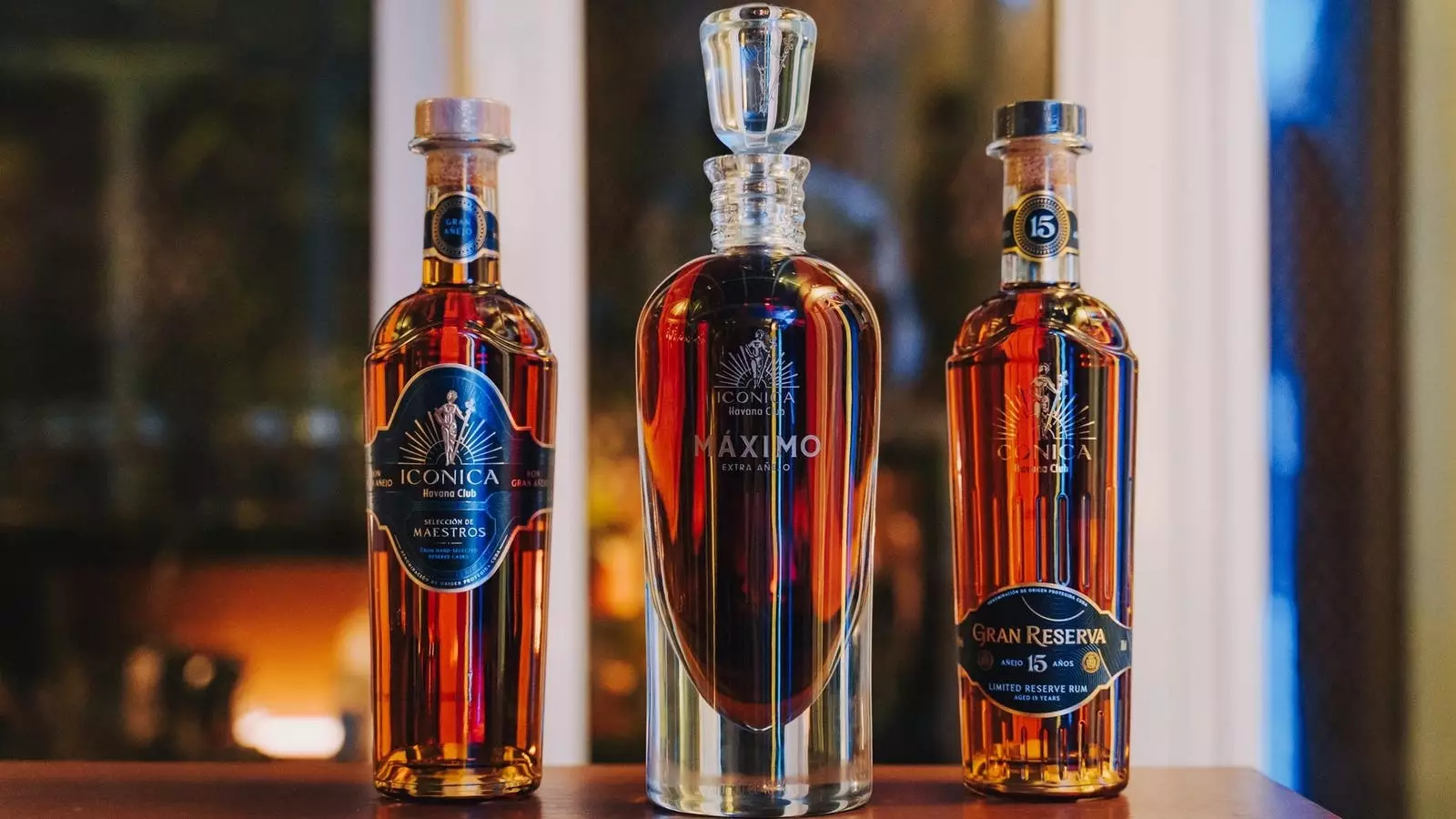The world of spirits is in constant flux, with companies continuously exploring innovative techniques to entice consumers and capture market share. In an era where brand narrative plays a significant role in purchasing decisions, established names such as Havana Club and Highland Park are revamping their images and product lines—not by changing the contents of their bottles but by reimagining their brand aesthetics and storytelling.
Havana Club, a revered name in the rum industry, is set to embark on a transformative journey with its premium Icónica collection. Owned by Pernod Ricard, this well-respected brand has garnered acclaim for its craftsmanship and quality, particularly through its meticulous aging processes and traditional methods. However, in today’s competitive marketplace, merely resting on laurels isn’t enough; brands must evolve to capture the interest of a discerning clientele.
The Icónica lineup represents the pinnacle of the Havana Club experience—from the treasured 7-Year-Old Añejo to the exquisitely rare Máximo Extra Añejo, which is crafted with meticulous attention and celebrated for its rarity. Priced at €2,500 (approximately $2,100), Máximo is not merely a drink; it’s an artifact of history, representing ten generations of Cuban rum mastery. The recent package redesign—emphasizing the brand’s heritage, and utilizing chic, modern aesthetics—aims to bridge the gap between tradition and contemporary appeal. With this strategic pivot, Havana Club is intent on solidifying its standing in the luxury segment, appealing to both longtime aficionados and new luxury seekers.
This rebranding exercise is more than skin-deep; it involves a revival of craftsmanship techniques that connect back to established legends, like the continuous aging pioneered by the late Don Navarro. The commitment to preserving time-honored traditions while adapting to modern tastes is a duality that can resonate deeply with consumers who value authenticity.
Across the waters in Scotland, Highland Park is undertaking a similar venture. Traditionally associated with hearty Viking imagery and masculine branding, the whisky distillery is pivoting to embrace a broader and more contemporary audience. With a specific focus on millennials and younger consumers, Highland Park recognizes that inclusivity in branding is not optional; it’s essential for future growth.
The Orkney Islands, rich in myth and history, provide a perfect backdrop for Highland Park’s new approach—a mix of timeless storied tradition and modern allure. By shifting its brand message away from singular Viking motifs, Highland Park is inviting a wider audience to explore not only the whisky but the rich cultural tapestry that surrounds it. This new narrative is pivotal as it aims to attract those aged 25 to 35—demographics that appreciate provenance and craftsmanship.
The reimagining of Highland Park’s packaging to reflect the natural beauty of Orkney—its rugged landscapes and serene waters—communicates an emotional connection. The design utilizes a vibrant color palette and modern bottle shapes to symbolize not just the whisky inside, but the journey that it represents. This approach not only retains the existing flavors that define Highland Park but also seeks to educate younger consumers about the nuances of Scotch whisky.
Both brands, albeit from different parts of the world, are exemplifying an emerging trend in the spirits industry: that of narrative-driven brand evolution. In a landscape crowded with options, consumers gravitate toward brands that tell compelling stories, convey authenticity, and embody quality within their craftsmanship.
Additionally, both Havana Club and Highland Park are employing unique marketing strategies to maintain relevance. While the Icónica collection prepares for a global rollout, focusing on key markets like Germany, France, and Italy, Highland Park is eyeing the travel retail sector for its exclusive expressions. This decision showcases an understanding of consumer behaviors—where aspirational purchasing often occurs in transit.
As Warner Krause once posited, brands must continually adapt or risk obsolescence. The rebranding initiatives taken by Havana Club and Highland Park represent more than just refreshed labels; they embody a deeper commitment to understanding consumer desires, embracing contemporary aesthetics, and preserving rich legacies. This creative revitalization illustrates that while the spirit distilling process may remain unchanging, the way in which these storied brands present themselves to the world must constantly evolve. As these strategies unfold, they will undoubtedly influence the broader context of the luxury spirit market moving forward.

